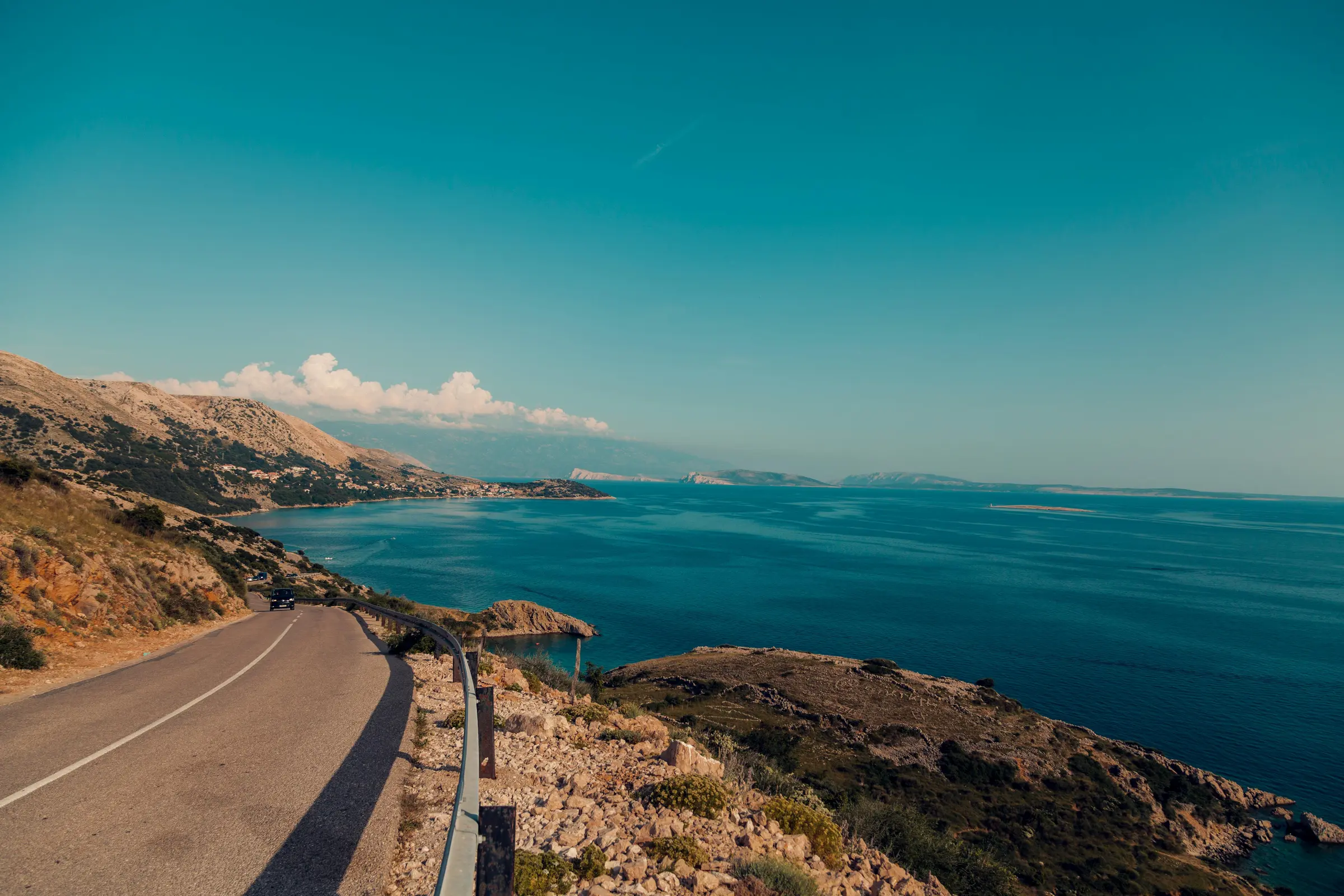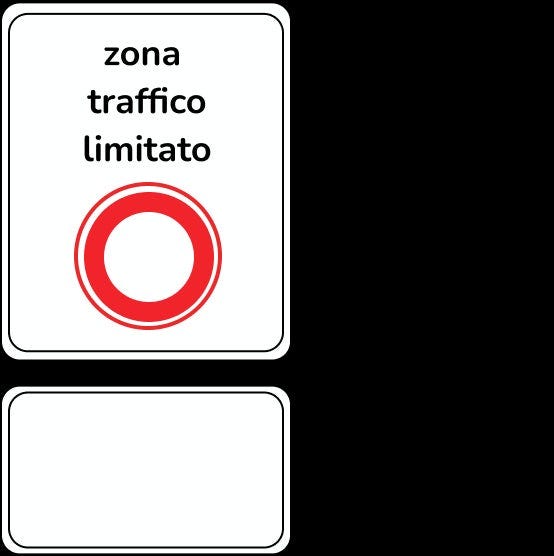Car trips in Italy are the best way to explore the picturesque landscapes, charming small towns, and quieter beaches at your own pace. To help you plan, we offer numerous road trip recommendations for Italy, complete with detailed itineraries. You can find these on our Italy page or by browsing through the various regions. If you're driving in Italy for the first time, there are a few important things you need to know:

Toll Obligations in Italy
Distance-Based Toll System
Italy uses mostly a distance-based toll system with no digital or sticker vignettes. When you enter a toll highway, you will pass a toll station where you need to take a ticket. When you exit, you must present this ticket to pay the toll. Payment can be made in cash, by credit card, or through the Telepass system. The average toll is 7 cents per kilometer (as of 2024), though actual costs depend on your vehicle. Toll prices are often higher in mountainous regions due to the increased infrastructure maintenance costs.
In toll station areas, U-turns, reversing, and lane changes are strictly prohibited! Violations can be very costly. Signs with green lettering indicate highways, while those with blue lettering indicate expressways.
For more information, visit the Autostrade website. For Austria, visit the ÖAMTC website.
Flat Rate Toll System
In some areas, tolls are paid with a flat rate instead of being distance-based. This can be confusing, especially when transitioning between toll systems, particularly at highway intersections:
- Milano Sud (A1 to Bologna)
- Milano Ghisolfa (A4 to Torino)
- Milano Est (A4 to Venezia)
- Milano Ovest (A7 towards Genova)
- Gallarate Ovest (A8/A26 to Lago Maggiore)
At these intersections, you must take a highway card (biglietto di pedaggio) at the toll station.
This flat rate system applies to the following routes, among others:
- A3: Napoli-Salerno, Varese-Milano
- A5: Morgex-Aosta
- A9: Como-Milano
- A12: Roma-Civitavecchia
- A20: Messina-Villafranca
- A32: Torino-Bardonecchia
- A56: Napoli-Pozzuoli
Are there Toll-Free Highways?
Yes, in southern Italy, there are approximately 900 km of toll-free highways. Notably, this includes the A2 from Salerno to Reggio di Calabria.
In Sicily, tolls are charged only on the A20 highway between Messina and Palermo and on the A18 from Messina to Catania. All other routes are toll-free.
In Sardinia, there is just one highway (Olbia – Sassari) and it is toll-free.
City Tolls in Italy
Currently, three cities in Italy have a city toll for their inner city areas: Milan, Bologna, and Palermo.
In Milan, the Ecopass must be paid. The fee depends on the vehicle's emission class and is currently 5 euros per day. Motorcycles and electric cars are exempt from this toll. Note that some emission classes are not allowed to enter the city center at all. Be sure to check the details beforehand.
In Bologna, a day ticket costs 6 euros, while a 4-day ticket is priced at 15 euros. This allows access to the traffic-calmed zone in the city center between 7 am and 8 pm. Only motorcyclists are exempt from the toll.
In Palermo, the toll costs 5 euros for a day ticket or 20 euros for a monthly ticket. Motorcycles and electric cars are exempt. The applicable times for the toll vary by month, so it’s important to check the specific details in advance.
Italian Driving Style
Italian drivers are famous for their "sporty" driving style and tendency to ignore turn signals. Stay alert and adapt to the traffic flow. Driving on highways and in the countryside is generally smooth due to ample space for maneuvering. However, driving in large cities, like Naples and Rome, can be very stressful and should be avoided if possible. Here are a few tips:
- Rent your car before leaving the city. This allows you to avoid city driving and also save money.
- If you're traveling with your own car, park it outside the city center in a parking garage and explore the city using public transport or on foot. Most cities are easily navigable without a car.
- Pay close attention to the ZTL zones (more on that later).
Speed Limits
Italian drivers are often known for their passionate driving style. It's important not to be influenced by this and to adhere to the speed limits:
- In town: 50 km/h
- Country roads: 90 km/h
- Expressways: 110 km/h
- Highways: 130 km/h
For novice drivers, lower speed limits apply during the first three years after obtaining a driver's license.
Not adhering to speed limits can lead to an expensive surprise back home. Traffic fines can arrive even a year and a half later! In such cases, it’s best to contact your automobile club. Depending on who sent the letter, you might not have to pay the fine after all.
ZTL Zones

The purpose of these zones is to control and reduce traffic in tourist and historic city centers. Entry is typically limited to residents, authorized vehicles, and individuals with special permits. These restrictions are enforced by surveillance cameras, and violations can result in fines ranging from 80 to 300 euros. To avoid these fines, we highly recommend parking your car in a garage outside the city center when visiting major cities like Florence, Rome, or Naples.
Don’t Rely on GPS
To avoid potentially costly mistakes, be sure to pay close attention to ZTL traffic signs. Do not rely on Google and Apple Maps, as they can direct you through streets where driving is prohibited for tourists.
Hotels in ZTL Zones
Most hotels located within ZTL zones can assist guests with understanding ZTL regulations and obtaining necessary permits. If a hotel provides parking for guests, they can often register your vehicle in advance, granting you access to the restricted area. Be sure to inquire about this service beforehand.
Getting around without a car
No car allowed in the city centre? No problem. Major Italian cities boast excellent public transportation systems. Additionally, most city centers are easily walkable if your accommodation is centrally located.
Traffic Rules
Headlights and Safety Equipment
In Italy, it is mandatory to use low beam headlights during the day outside urban areas. Additionally, you must carry a yellow safety vest, a warning triangle, and a first-aid kit in the vehicle. In the event of a breakdown or accident, everyone must wear the safety vest once they leave the vehicle.
Drinking and Driving
The blood alcohol limit in Italy is 0.5. For novice drivers in their first three years and drivers under 21 years of age, there is a strict 0.0 limit. Violations can result in hefty fines starting at 530 euros, and penalties for traffic offenses increase by a third between 10 PM and 7 AM.
Road Traffic Specifics
In roundabouts, entering vehicles have the right of way, which often causes confusion as this rule is not always followed. On mountain roads, vehicles driving uphill have the right of way, and buses generally have priority on mountain roads.
Parking
Parking in Italian cities can be challenging due to limited availability and strict regulations.
Different Parking Zones
In cities, you'll find a variety of parking zones:
- Blue Zones: Paid parking spaces that require a parking ticket or the use of a parking meter.
- White Zones: Free parking spaces, often with time restrictions.
- Yellow Zones: Reserved parking spaces, typically for residents or specific groups.
Parking Tickets and Machines
In blue zones, you must purchase parking tickets from machines and place them visibly in your car. In some cities, you can also pay parking fees via app.
Parking Garages
Larger cities offer public parking garages. These are usually more expensive but provide greater security and central locations.
Additional Tips
- Rental Cars: Opt for a smaller model to make finding parking spots much easier.
- Travel Time: Plan your trip outside peak hours to avoid traffic jams, especially on weekends and during holiday periods.
- Navigation: Use a reliable navigation system or an app that works offline to avoid possible GPS outages. In towns, don't rely solely on the GPS - many systems are unaware of ZTL zones and may mislead you.
- If your hotel / agrotourismo is in a rural area, also don't rely too much on your navi. Instead follow the directions of your accommodation.

